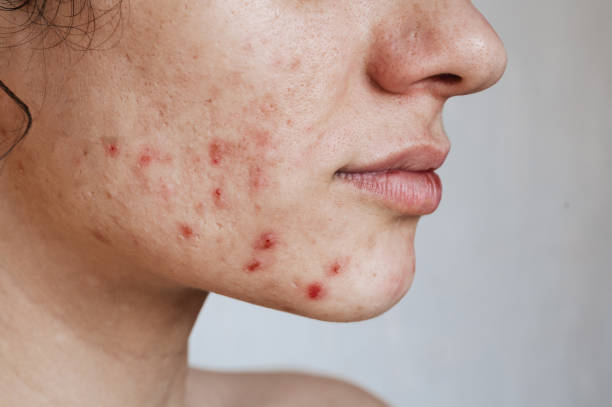Acne is a common skin condition that affects millions of individuals worldwide, often leaving behind redness, scars, and marks that can impact self-esteem and confidence. Effective Acne Treatment in Abu Dhabi aims not only to clear active breakouts but also to address the lingering skin concerns such as redness and marks. These residual skin issues can persist long after the pimples have healed, making comprehensive treatment essential for achieving smooth, clear skin. Understanding how acne treatments work to reduce redness and marks can help individuals make informed decisions about their skincare options.
Understanding Acne-Related Redness and Marks
What Causes Redness and Marks After Acne?
Redness and marks are common sequelae of acne due to inflammation and skin trauma caused by inflamed pimples, cysts, or pustules. When acne lesions rupture or penetrate deep into the skin, they trigger an inflammatory response that results in redness and swelling. As the skin heals, it often leaves behind hyperpigmentation or scars. These marks can be either temporary or permanent, depending on the severity of the acne and the treatment received.
The Role of Inflammation in Skin Damage
Inflammation plays a crucial role in the development of redness and post-acne marks. When the skin’s immune system responds to acne-causing bacteria and clogged pores, it releases inflammatory mediators that cause blood vessels to dilate, resulting in redness. Persistent inflammation can damage collagen and elastin fibers, leading to scars and uneven skin texture. Therefore, controlling inflammation is a key component of effective acne treatment strategies.
How Acne Treatments Help in Reducing Redness
Targeting Inflammation to Calm the Skin
One of the primary goals of acne treatment is to reduce inflammation. Treatments often include anti-inflammatory agents that soothe irritated skin, decreasing redness and swelling. These agents work by suppressing the immune response that causes redness, thereby calming the skin and promoting healing.
Use of Topical Agents and Medications
Topical treatments such as retinoids, antibiotics, and other anti-inflammatory creams are frequently prescribed to reduce redness. These formulations help diminish inflammation directly at the site of lesions, leading to visibly calmer skin. Consistent application over time results in a significant reduction in persistent redness associated with acne.
Advanced Light and Laser Therapies
Modern dermatological procedures, including laser therapy and intense pulsed light (IPL), are highly effective in decreasing redness. These treatments target blood vessels that contribute to the redness, causing them to constrict and fade. Such procedures can provide rapid and noticeable improvement in skin redness, especially in cases of rosacea or persistent post-acne erythema.
How Acne Treatments Minimize Marks and Scars
Promoting Skin Regeneration
Effective Acne Treatment involves stimulating the skin’s natural healing process. Treatments such as chemical peels, microdermabrasion, and laser resurfacing remove damaged skin layers and promote the growth of new, healthy skin. This process helps fade hyperpigmentation and smooth out uneven skin texture caused by scars.
Collagen Production Enhancement
Many acne scars are a result of collagen loss in the skin. Certain treatments, especially laser therapies and microneedling, encourage collagen production. Increased collagen helps fill in depressed scars, improve skin elasticity, and reduce the appearance of marks over time.
Use of Topical and Injectable Solutions
Post-inflammatory hyperpigmentation and marks can also be treated with topical agents containing ingredients like vitamin C, kojic acid, or niacinamide, which lighten dark spots. In some cases, dermatologists may recommend fillers or other injectables to elevate indented scars, offering a smoother skin surface.
Integrated Approach for Managing Redness and Marks
Combining Treatments for Optimal Results
Addressing redness and marks often requires a combination of therapies tailored to an individual’s skin type and severity of scarring. An integrated approach might include topical medications, laser treatments, chemical peels, and lifestyle modifications to enhance skin healing and rejuvenation.
Importance of Skincare Routine and Sun Protection
A consistent skincare routine is vital for maintaining improvements achieved through treatments. Gentle cleansing, moisturizing, and using broad-spectrum sunscreens help protect the skin from UV damage, which can worsen hyperpigmentation and delay healing. Proper skincare supports the effectiveness of medical treatments and prevents new marks from forming.
Lifestyle Factors and Preventive Measures
Diet and Hydration
A balanced diet rich in antioxidants, vitamins, and minerals supports skin health and reduces inflammation. Staying well-hydrated helps maintain skin elasticity and facilitates natural healing processes, minimizing redness and marks.
Avoiding Skin Trauma and Picking
Picking or squeezing pimples can exacerbate inflammation and increase the likelihood of scars. Practicing gentle skincare and resisting the urge to manipulate skin lesions are essential preventive measures for reducing the risk of persistent marks.
Managing Stress and Sleep
Stress management and adequate sleep contribute to overall skin health. Stress can trigger breakouts and inflammation, while restful sleep allows the skin to repair and regenerate more effectively.
Long-Term Maintenance and Follow-Up Care
Regular Skin Assessments
Consistent follow-up with a dermatologist ensures that treatment plans are adjusted based on skin response. Monitoring progress helps in optimizing treatments aimed at reducing redness and marks.
Continuing Skincare and Preventive Measures
Even after visible improvements, maintaining a tailored skincare routine and protective measures like sun protection are crucial for preventing recurrence of redness and marks. Long-term care supports sustained skin clarity and texture.
Conclusion
Effective Acne Treatment Abu Dhabi encompasses a comprehensive approach to not only control active acne but also to significantly diminish redness and marks that often linger after breakouts. By targeting inflammation, promoting skin regeneration, and encouraging collagen production, modern treatments can restore skin’s smoothness and even tone. Combining medical procedures with proper skincare, lifestyle changes, and preventive measures ensures that individuals can achieve healthier, clearer skin with minimized redness and scarring. Consulting with a qualified skincare professional can help tailor a personalized treatment plan that addresses specific skin concerns and promotes lasting results.

